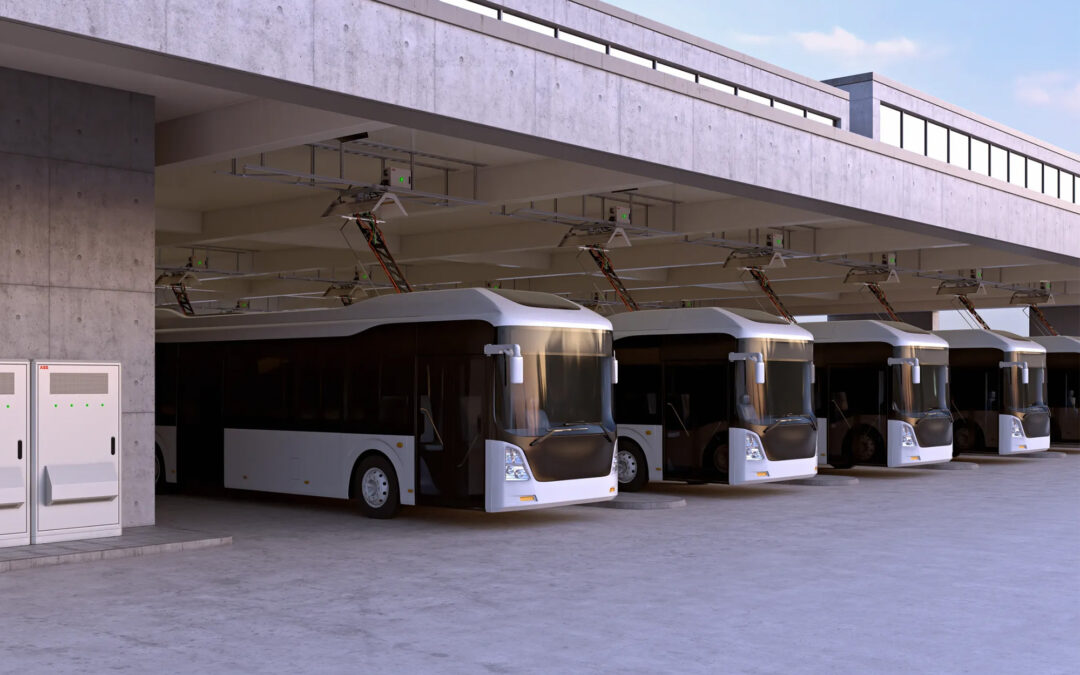Electric vehicles (EVs) are transforming the fleet management industry with their sustainability and cost-efficiency. For fleet managers and business owners, understanding the unique maintenance requirements of electric vehicles is vital for minimizing downtime, optimizing performance, and reducing overall costs.
Keep reading for an in-depth look at how to effectively maintain an EV fleet, highlighting key differences from traditional vehicles, essential routine checks, and potential cost-saving opportunities.
Why Electric Vehicle Maintenance Matters
Electric vehicle fleet maintenance is fundamentally different from managing a fleet of internal combustion engine (ICE) vehicles. While EVs have fewer moving parts and require less frequent servicing, neglecting their specific maintenance needs can lead to performance degradation and unexpected expenses. Proper maintenance ensures:
- Longer vehicle lifespan
- Maximized uptime for operations
- Enhanced battery performance and efficiency
- Lower overall operating costs
Understanding and addressing these benefits ensures your fleet remains operational and efficient. A well-maintained electric fleet isn’t just an investment in sustainability; it’s a strategic advantage for long-term success.
Key Differences Between EV and ICE Maintenance
Understanding the differences between EV and ICE vehicle maintenance helps fleet managers create an optimized plan tailored to the unique requirements of electric fleets.
Simplified Maintenance Needs
EVs lack many components commonly found in ICE vehicles, such as spark plugs, oil filters, and exhaust systems. This reduction in parts translates to fewer maintenance points, but other components, such as batteries and software systems, demand greater attention. As a result, maintenance schedules can often be less frequent, saving time and costs, though specialized care for EV-specific systems is essential for long-term performance.
Battery Maintenance
The EV battery is the most critical and expensive component of the vehicle. Regular inspections and adherence to manufacturer guidelines for charging practices can help preserve battery health and extend its lifespan. Temperature extremes, overcharging, and frequent deep discharges can negatively affect battery performance. Fleet managers should also consider implementing battery analytics tools, which provide insights into battery health trends and help forecast potential issues before they arise.
Software and Connectivity
EVs rely heavily on advanced software systems. Regular updates and diagnostics ensure the software operates efficiently, enabling features like energy optimization, vehicle tracking, and predictive maintenance. Robust software management not only enhances operational efficiency but also contributes to seamless integration with electric vehicle fleet management platforms, reducing administrative overhead.
Braking System
Regenerative braking systems in EVs reduce wear and tear on traditional brake components. However, the braking system still requires periodic inspections to ensure safety and functionality. Routine brake system maintenance can also help optimize regenerative braking efficiency, contributing to longer battery range and better vehicle control during operation.
Routine Checks Your Fleet Vehicles Need
A comprehensive maintenance plan for EV fleets should incorporate routine checks tailored to the vehicle’s unique components. Key areas to monitor include:
1. Battery Health
The battery is the backbone of any electric vehicle, making its maintenance critical. Proper care includes regular diagnostics to detect any potential issues early and monitoring for signs of wear or reduced capacity. Addressing battery health proactively can extend the overall lifespan of the vehicle.
- Schedule regular diagnostics to evaluate battery performance
- Monitor charging habits to avoid overcharging or undercharging.
- Inspect cooling systems to prevent overheating
2. Tires
Tires play an essential role in vehicle efficiency and safety. Regularly inspecting and maintaining proper tire pressure and alignment can reduce rolling resistance, improving energy consumption and overall performance. Addressing tire issues early can also prevent further complications.
- Check tire pressure and alignment regularly.
- Inspect for wear and tear to optimize energy efficiency and safety.
3. Electrical Systems
EV electrical systems power critical features like navigation, diagnostics, and communications. Ensuring these systems’ function properly supports the smooth operation of fleet vehicles. Small electrical faults, if left unchecked, can lead to more significant issues over time.
- Always test charging ports and cables for signs of wear.
- Ensure proper functioning of onboard electronics, including GPS and telematics systems.
4. Cooling and Heating Systems
Thermal management systems are vital for maintaining the right operating temperatures for EV batteries and other components. Regular checks can prevent performance drops during extreme weather conditions and reduce strain on the vehicle’s electrical systems.
- Be sure to inspect thermal management systems to maintain proper operating temperatures for batteries and other components.
5. Brake Systems
Regenerative braking systems in EVs contribute to energy efficiency while reducing wear on traditional brake components. However, routine inspections ensure these systems function effectively and provide optimal safety during operations. Proactive brake maintenance also supports consistent regenerative braking performance.
- Examine brake pads and fluid levels.
- Ensure regenerative braking is functioning effectively.
Investing in electric vehicle maintenance isn’t about putting a strain on your resources. Instead, taking care of your electric fleet charging infrastructure supports your organizational growth.
Cost-Saving Opportunities You Don’t Want to Miss Out On
EVs offer significant long-term cost savings due to reduced maintenance needs. Fleet managers can further optimize expenses by leveraging the following strategies:
Predictive Maintenance
Advanced telematics systems can predict maintenance needs before issues arise, allowing proactive servicing that minimizes downtime and prevents costly repairs. Many EV manufacturers offer software solutions integrated with predictive analytics.
Reduced Fuel Costs
Transitioning to EVs eliminates reliance on gasoline or diesel. Lower fuel expenses can offset the higher upfront costs of EV procurement and infrastructure setup.
Incentives and Rebates
Many states, including Texas, offer incentives and rebates for adopting EV technology. These programs can help reduce the cost of purchasing and maintaining EVs, providing additional savings for businesses.
Optimized Fleet Operations
Using data analytics to monitor vehicle usage patterns can enhance scheduling, reduce idling, and improve overall fleet efficiency. Properly maintained EVs are less likely to suffer unexpected breakdowns, further lowering operational costs.
How to Address Challenges in Electric Vehicle Fleet Maintenance
While EV maintenance offers many advantages, there are some challenges that fleet managers must address:
Availability of Skilled Technicians
EV maintenance requires specialized knowledge, particularly for handling batteries and software systems. Fleet managers should partner with certified service providers or invest in technician training programs to ensure their teams are well-equipped to manage EV-specific needs.
Access to Charging Infrastructure
Charging station availability is critical for fleet operations. Implementing a robust charging infrastructure and planning charging schedules minimizes disruptions and maximizes vehicle uptime.
Supply Chain for Parts
Although EVs have fewer components, sourcing specialized parts like batteries and charging cables can be challenging. Building relationships with reliable suppliers can mitigate delays and reduce downtime.
The Role of Lonestar Integrated Solutions in Electric Vehicle Fleet Maintenance
At Lonestar Integrated Solutions, we understand the complexities of managing electric vehicle fleets. Our tailored solutions help businesses across Texas and nationwide adopt EV technology seamlessly. From setting up charging infrastructure to providing ongoing maintenance support, we’re committed to optimizing your fleet operations and reducing costs.
Whether you’re transitioning to an electric fleet or expanding your existing EV operations, we offer:
- Custom charging solutions to suit your fleet’s unique needs
- Access to certified technicians for expert maintenance and repairs
- Data-driven insights to enhance fleet efficiency and longevity
Our offerings ensure your fleet operates at peak performance, delivering reliability and cost-effectiveness for your business.
The Bottom Line
Electric vehicle fleet maintenance is essential for minimizing downtime, reducing costs, and optimizing performance. By understanding the unique requirements of EVs—from battery care to software updates—fleet managers can unlock the full potential of their electric fleets. With the right strategies and support from partners like Lonestar Integrated Solutions, your EV fleet can drive your business toward a more sustainable and cost-effective future.
Optimize Your Fleet With Lonestar Integrated Solutions
Partner with Lonestar Integrated Solutions to unlock the full potential of your electric fleet. Visit Lonestar Integrated Solutions to get started today.

